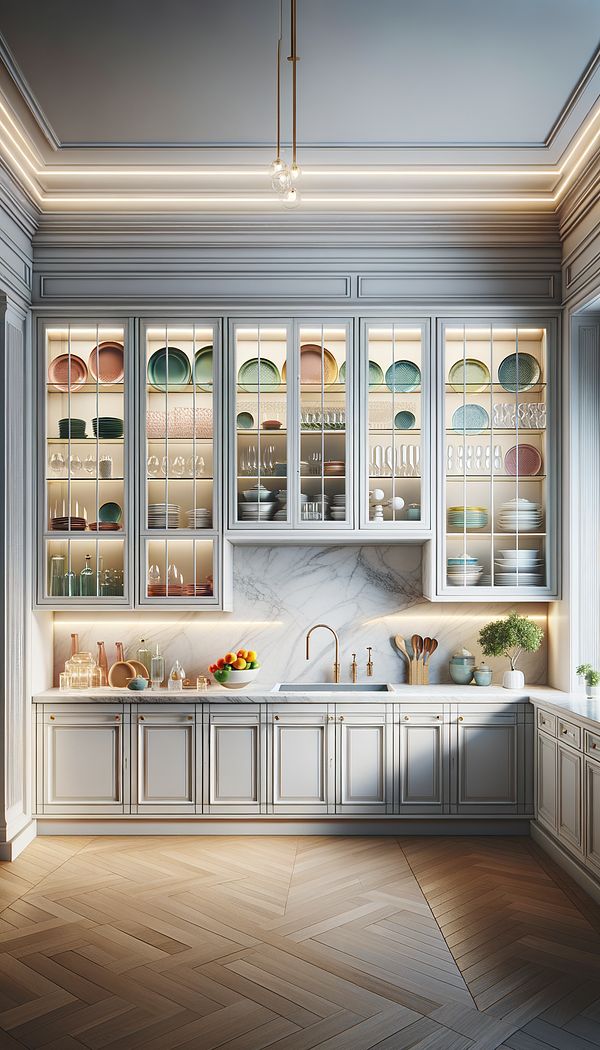What is a Cupboard?
A cupboard is a piece of furniture with shelves or compartments, used for storing items.
Description
In the realm of interior design, a cupboard is an essential, functional piece of furniture that adds both utility and aesthetic value to a space. This versatile furniture piece consists of shelves or compartments enclosed by doors. Cupboards are primarily used for storage, helping to keep spaces organized by accommodating a wide variety of items, from kitchenware and foodstuff in the kitchen to linens and toiletries in the bathroom.
The design, material, and size of a cupboard can vary tremendously, making it a flexible choice for different interior styles and spaces. Modern cupboards may feature innovative materials and finishes, while traditional ones might highlight wood construction and classic details. Moreover, cupboards are not only limited to standing on the floor; wall-mounted cupboards are common in kitchens and bathrooms, optimizing use of vertical space and contributing to a clean, uncluttered look.
Choosing the right cupboard involves considering the intended use, the available space, and the overall design aesthetic of the room. For instance, a glass-fronted cupboard could be used to display decorative items or collectibles, adding character to a living room or dining area.
Usage
Cupboards are ubiquitous in homes and can be found in various rooms, serving multiple purposes. In the kitchen, they store food, dishes, and cookware. In bedrooms, they may hold clothes or personal items. Bathrooms use cupboards to store towels, toiletries, and cleaning supplies. Even in living rooms, cupboards can be used to organize books, display decorative objects, or hide entertainment systems. The versatility and utility of cupboards make them an indispensable part of home storage solutions.
FAQs
-
What materials are commonly used for cupboards?
Cupboards can be made from a range of materials including wood, metal, glass, and engineered wood products like MDF or particle board. The choice of material often depends on the intended use, desired aesthetic, and budget.
-
How do I choose the right size cupboard for my space?
Measure the available space carefully, considering both the width and height. Think about what you need to store and ensure that the cupboard's internal dimensions match your storage requirements. Also, consider the scale of the cupboard in relation to the room to maintain a balanced look.
-
Can cupboards be customized?
Yes, many furniture stores and manufacturers offer customizable cupboard options. You can select the size, material, finish, and sometimes even the configuration of shelves and compartments to suit your specific needs.
Practical Application
When incorporating a cupboard into your design, consider its usage, size, and placement. For kitchens and bathrooms, focus on functionality and easy access. In living and dining areas, think about how a cupboard can complement the room's décor and possibly display decorative items. Regular maintenance, such as cleaning and adjusting doors and hinges, will keep your cupboards in good condition. Finally, don't forget to utilize both the interior space and the top of the cupboard for storage or decorative purposes.
-
Architectural Elements199 articles
-
Design Styles478 articles
-
Furniture Types599 articles
-
Kitchen & Bath37 articles
-
Storage & Organization79 articles
-
Lazy SusanA rotating tray placed on a table or countertop to aid in distributing food.
-
Eight-Way Hand TiedEight-Way Hand Tied is a traditional method of sofa and chair construction known for its durability and comfort.
-
SegmentalSegmental refers to parts or segments of a whole, often relating to design elements divided into sections.
-
Double BedA double bed is a medium-sized bed designed to accommodate two people.
-
High ReliefHigh relief is a sculptural technique where the sculpted elements stand out significantly from the background.
